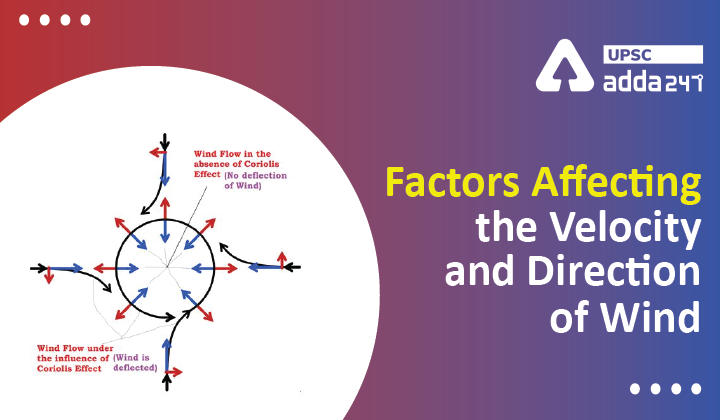Table of Contents
Wind movement UPSC
- Horizontal movement of air is called wind.
- Vertical movement of air is called current.
- The wind blows from high pressure to low pressure.
- Wind movement is influenced by a variety of factors like friction, rotation of earth etc.
- The wind movement in near the earth surface is respond to the combined effect of three forces – the pressure gradient force, the frictional force and the Coriolis force. In addition, the gravitational force acts downward.
Pressure Gradient Force
- The differences in atmospheric pressure produces pressure gradient force.
- The rate of change of pressure with respect to distance is the pressure gradient.
- The pressure gradient is strong where the isobars are close to each other and is weak where the isobars are apart.
- So, in a closely spaced gradient, steep pressure change is found due to which there is a strong wind speed.
Coriolis force
- The rotation of the earth about its axis affects the direction of the wind.
- This rotation produces a force called a Coriolis force, which is named after a French physicist.
- This force deflects the wind to the right direction in the northern hemisphere and to the left in the southern hemisphere, thus following Farrell’s law.
- Also, the deflection is more when the wind velocity is high.
- The Coriolis force is directly proportional to the angle of latitude.
- It is maximum at the poles and is absent at the equator.
- The Coriolis force acts perpendicular to the pressure gradient force.
Frictional force
- Friction is caused due to the irregularities of the earth’s surface, which offers resistance to the wind movement.
- Frictional force affects the speed of the wind.
- It is greatest at the surface and its influence generally extends upto an elevation of 1 – 3 km.
- Over the sea surface the friction is minimal.
Why tropical cyclones are not formed near the equator?
- As we know that the Coriolis force acts perpendicular to the pressure gradient force.
- The pressure gradient force is perpendicular to an isobar.
- So, higher the pressure gradient force, the more is the velocity of the wind and the larger is the deflection in the direction of wind.
- Due to the two forces operating perpendicular to each other, in the low-pressure areas, the wind blows around it.
- At the equator, the Coriolis force is zero (discussed above) and the wind blows perpendicular to the isobars.
- The low pressure gets filled instead of getting intensified.
- That is the reason why tropical cyclones are not formed near the equator.
UPSC favourite topics





 TSPSC Group 1 Question Paper 2024, Downl...
TSPSC Group 1 Question Paper 2024, Downl...
 TSPSC Group 1 Answer key 2024 Out, Downl...
TSPSC Group 1 Answer key 2024 Out, Downl...
 UPSC Prelims 2024 Question Paper, Downlo...
UPSC Prelims 2024 Question Paper, Downlo...
